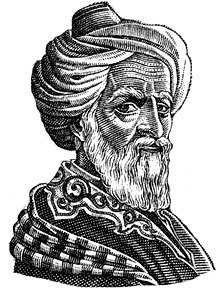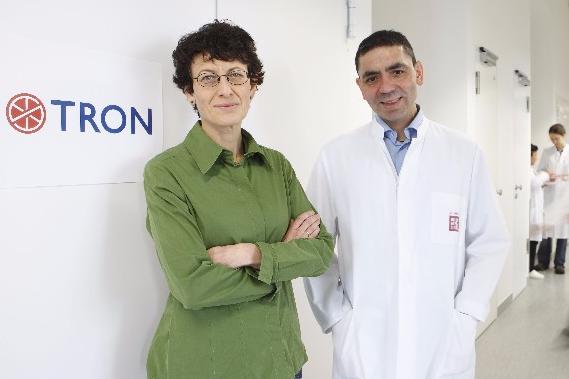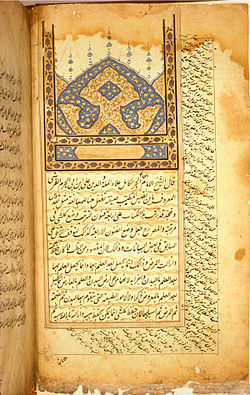Here are some of the most incredible discoveries and achievements in the field of medicine by Muslims!
Here are some of the most incredible discoveries and achievements in the field of medicine by Muslims!
Medieval medicine is often seen as an oxymoron with medical knowledge in many places in Europe actually going backwards. The advent of Islam in the 7th century A.D. gave rise to impressive growth and discoveries in many scientific fields, especially medicine, and still today Muslims are still at the cutting edge of medicine.
Here are 8 Islamic achievements in medieval and modern medicine.
1. Inoculation
Inoculation wasn’t founded by Pasteur and Jenner, rather it was the Turks who did. The Turks inoculated with bits of the smallpox disease, which produced a mild form of the disease, but protected from more serious forms of smallpox around 50 years before Europe did.
Although the practice of inoculation was allegedly practiced in Northern Africa and Palestine, it was officially recognised by Lady Lady Montagu, the wife of the English ambassador in Istanbul between 1716 and 1718 who wrote letters explaining the process and how it successfully protected her son Edward. Nonetheless, it was definitely the Muslim world that inaugurated inoculation.
2. Surgery and surgical instruments
Al Zahrawi, an Arab Andalusian physician, surgeon and chemist, invented over 200 surgical instruments, many of which are still used today, including forceps, scalpel, surgical needle and retractor, specula, and catgut sutures.

His book “Al Tasrif” was used in Europe for over 500 years and explained how to perform many surgeries, such as removing pollups from the nose and treating a dislocated shoulder.
3. Covid 19 vaccine
Dr. Ugur Sahin and his wife Dr. Özlem Türeci, Turkish immigrants to Germany, founded the medicine company BioNTech which partnered with Pfizer to create the first Covid 19 vaccine.

With a 100% efficacy rate in some cases but nothing lower 91.3%, the Pfizer vaccine is widely regarded as the most effective vaccine against Covid-19 and came at a time when the world needed it the most. Dr. Sahin and Dr. Türeci are the modern-day example of the pioneering Muslim doctors such as Al Zahrawi, al Nafis, and Ibn Sina.
4. Blood Circulation and Anatomy
While Western Europe credits William Harvey for discovering blood circulation in 1616, pulmonary circulation had already been described by the Arabic doctor Ibn Al-Nafis 300 years before Harvey.

Al-Nafis knew that the heart had two halves and that blood passed through the lungs when traveling from one side of the heart to the other.
5. Translations
One of the more underrated contributions to medicine was the translation of Galen and Hippocrates’ works from Greek, Syriac, Sanskrit, and Pahlavi into Arabic, and from Arabic into Latin which saved the texts from disappearing.
As these doctors translated medical knowledge from Hippocrates and Galen, they also added their own observations.
6. Hospitals and doctor training
The great Islamic doctor Al Razi oversaw Baghdad’s Audidi Hospital and trained its two dozens of staff. These early Islamic medical centres would be recognizable as hospitals today: they had wards for different diseases, outpatient clinics, surgery recovery wards, and pharmacies.

Islamic hospitals pioneered the use of antiseptics such as alcohol, opium, vinegar or rose-water in cleaning wounds many years before Joseph Lister and Ambrose Pare used antiseptics.
7. Diagnosing diseases
Muslim doctors made significant contributions for diagnosing diseases. Al Razi explained the difference between smallpox and measles and was the founder of pediatrics, writing a book on children’s diseases.
The great Islamic doctor Ibn Sina also discovered tuberculosis and described how contagious diseases spread and necessary methods of quarantine; something we definitely know about today.
8. The canon of medicine
Ibn Sina’s “The Canon of Medicine” is one of the most famous and influential books in the history of medicine that sets out the rules of testing new medicines and is still used today in medicine courses in universities. His writing states:
- The drug must be pure and not contain anything that would reduce its quality.
- The investigator must test the drug on one simple disease, not a condition that could have various complications.
- They should test the medication on at least two distinct diseases, because sometimes a drug might treat one disease effectively and another one by accident.
- A drug’s quality must match the severity of the disease. For example, if the “heat” of a drug is less than the “coldness” of a disease, it will not work.
- The researcher must time the process carefully, so that the action of the drug is not confused with other confounding factors, such as the natural healing process.
- The drug’s effect must be consistent, with several trials showing the same results. In this way, the investigator can rule out any accidental effects.
- Investigators must test the drug on humans, not animals, as it may not work in the same way for both.
Ibn Sina also created a system of medicine that is today known as “holistic” where physical and psychological factors, drugs, and diet are combined in treating patients.
References
6 Important Islamic Achievements in Medieval Medicine
The Islamic World in the Middle Ages
Avicenna’s Contribution to Cardiology
Coornavirus Vaccine: Biontech-Pfizer
Arabic Roots of Modern Medicine
How a 10th-Century Muslim Surgeon Revolutionised Surgical Procedures
Abu Al Qasim Al Zahrawi (Albucasis): Pioneer of Modern Surgery





